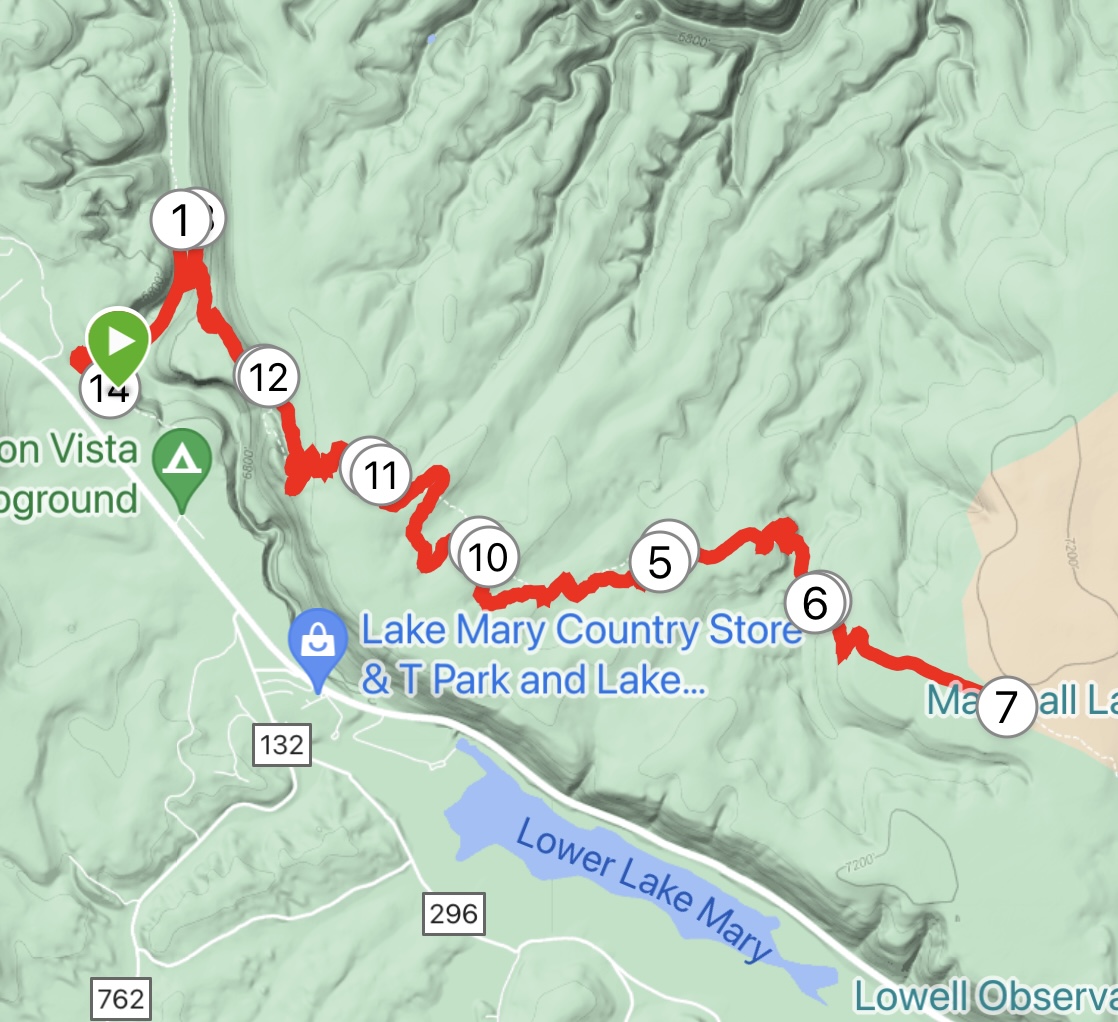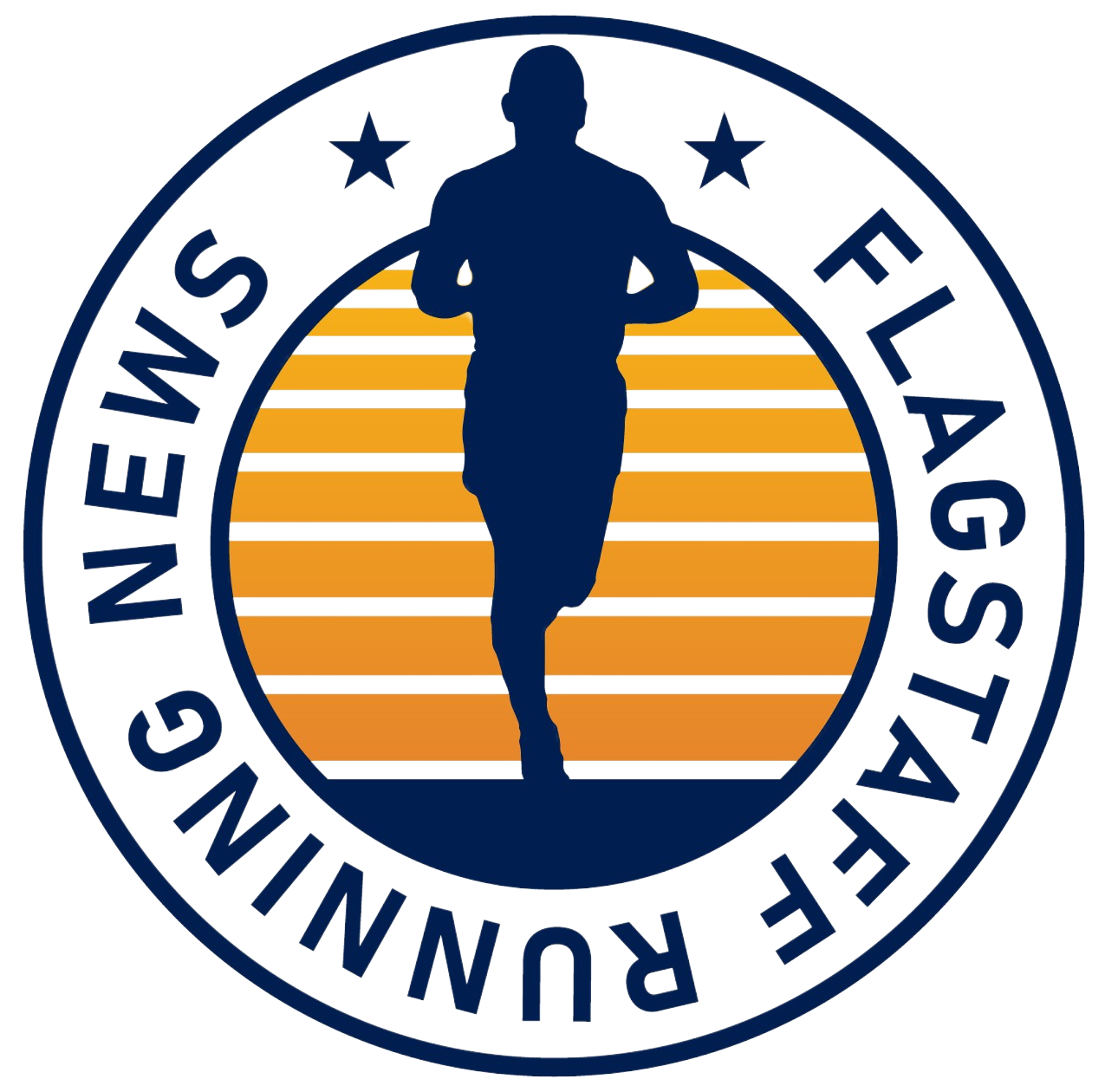My hatred, sheer loathing, for the first three-quarters of a mile of this run is eclipsed only by my fondness for a sublime four-mile stretch later on, making the initial drudgery seem a small price to pay for an overall enjoyable 14-mile out-and-back run on the Marshall Lake stretch of the Arizona Trail — segment 31a for those consulting a map.
It’s that first tricky bit on the Sandys Canyon Trail that I and my ankles always dread.
Parking at the Sandys Canyon Trailhead, just off Lake Mary Road, you plunge down a rocky, boulder-infested “trail” that lasts pert near a mile. Yes, I’ve descended steeper trails, and more rock-gardenish paths in my time, but the Sandys Canyon downhill always makes me grit my teeth and remind myself, Suck it up, this will be over soon.
The problem — and maybe it’s just me and my advanced age — is that the technical trail comes at the start of the run, when you and your body are still trying to wake up. Creaky joints certainly will complain no matter the time of day, but at 6 a.m., the Rice Krispies-type of knee and ankle popping are more pronounced.
At last, the rock gardens are behind you, and you can get into a steady running rhythm on a smooth path. Ah, bliss. For about a quarter of a mile, that is.
That’s when you make the righthand turn onto the Arizona Trail marked for Marshall Lake. This time, you are greeted by a steady switchback climb, somewhat rock-strewn, up to the mesa. It’s 515 feet of elevation gain in those two miles. Compared to Sandys Canyon, this is nothing, but you’ll definitely feel it. (By the way, the wooden marking at the junction tells travelers it’s 4.9 miles to Marshall Lake. It is not; it’s 6.5 miles.)
OK, so far, I haven’t done a great job selling this run.
It gets better, I promise.
In fact, as alluded to earlier, it gets downright sublime.

Miles 3 to 7 feature tree-shaded, lucious, winding singletrack that skirts the canyon walls and meanders through meadows. There’s not much elevation gain in this stretch — at least, you don’t notice much; it slowly accumulates — enabling you to pick up the pace and also enjoy a relatively rock- and root-free surface carpeted in late June by pine needles.
Near the turnaround point at the Lake — yes, it’s an out-and-back, unless you do a car shuttle at the Marshall Lake trailhead — you pass through the iron “Arizona Trail” gate and are greeted with a lovely open expanse of wildflowers and grassy marsh. You may ask yourself, especially in summer months, Hey, where’s the lake? Think more marsh and less lake, although I’ve done this trail in early spring when there actually is a significant pool and critters abound.
One of the promises of the AZT’s Marshall Lake segment, and its connection to Anderson Mesa farther south/east should you choose to ramble on, is that it’s a noted wildlife corridor.
The U.S. Forest Service has produced an edifying website called the Arizona Watchable Wildlife Experience, where you learn all about the species, both mammals and avian, that hang out in the area around Marshall Lake.
The biggest draw for animals: water. Marshall Lake, as stated, is more wetlands than a true body of water, but everything from osprey to elk are said to belly up to the shore to hydrate and nibble appetizers.

The wildlife experience website provides an audio catalogue of critters, including examples of the “piercing screams” of elk bulls in rut, the “chirps and mews” of elk calves and the Amber Alert-like “single sharp bark” of elk cows sensing distress. The narrator also promised sightings of pinyon jays along the trail, designated a National Audubon Society “Globally Important Bird Area,” and all manner of waterfowl along Marshall Lake, even during parched periods when the “lake” is reduced to puddles.
It’s exceedingly hard to run with binoculars around your neck, but even just traversing this segment by foot figured to produce some sightings. Once you’re able to settle into a groove at about Mile 3, you start searching for signs of wildlife. The Arizona Watchable Wildlife experience instructs that the best way to look for the pinyon jays — described as being “dull blue all over with a largest pointed bill” — is to look down, not up, because they are often busy collecting pinyon pine seeds. Other birds apparently use the hollows of dead trees (of which the trail has a fair amount) as their personal Airbnb.
So you find yourself pausing at points along the winding dirt path to peer into the cavity of downed trees, including a massive, ripped-out root system about 3 miles in. You see, well, nothing. No birds, dull blue or any other hue. Only slightly daunted, you move on. At last, while rounding a bend on a slight downhill section, you notice a fluttering about shin high. Three birds — were they pinyon jays?; hard to tell, they move so swiftly — take off. You feel sort of bad, disturbing their nut gathering.

As the run proceeds among blissful shade two hours after sunrise, you encounter a stillness that’s both soothing and a bit disappointing. You are, remember, seeking to commune with wildlife. Heading down into a meadow lush with pale, tall grass, you are startled by a rustling up ahead.
Two bounding deer, always impressive to witness but, really, a common occurence on most any trail in the greater Flagstaff area.
The trail ends at a dirt pullout maybe a quarter-mile from the marshiness. You make the effort and add a half-mile to get a closer look at the “lake.” Alas, still no obvious activity.
You turn back for the return trip and don’t see much more wildlife, but it’s a pleasant trip until turning on Sandys Canyon for the trip back up to the trailhead. It’s less jarring navigating the rocks and roots going uphill, so there’s that.
Still, I whined about it. That’s just the type of guy I am.
SANDYS CANYON TO MARSHALL LAKE ON THE AZT
Distance: 14.1 miles
Driving Directions: Park at the Sandys Canyon trailhead about 4.5 miles east off Lake Mary Road.
The route: Take Sandys Canyon Trail downhill 1 mile. Make a right on the signed Arizona Trail, headed to Marshall Lake. Follow the Arizona Trail for 6 miles to the junction with the trailhead at Marshall Lake. Retrace steps to Sandys Canyon.
Elevation Gain: 1,381 feet



Leave a Reply